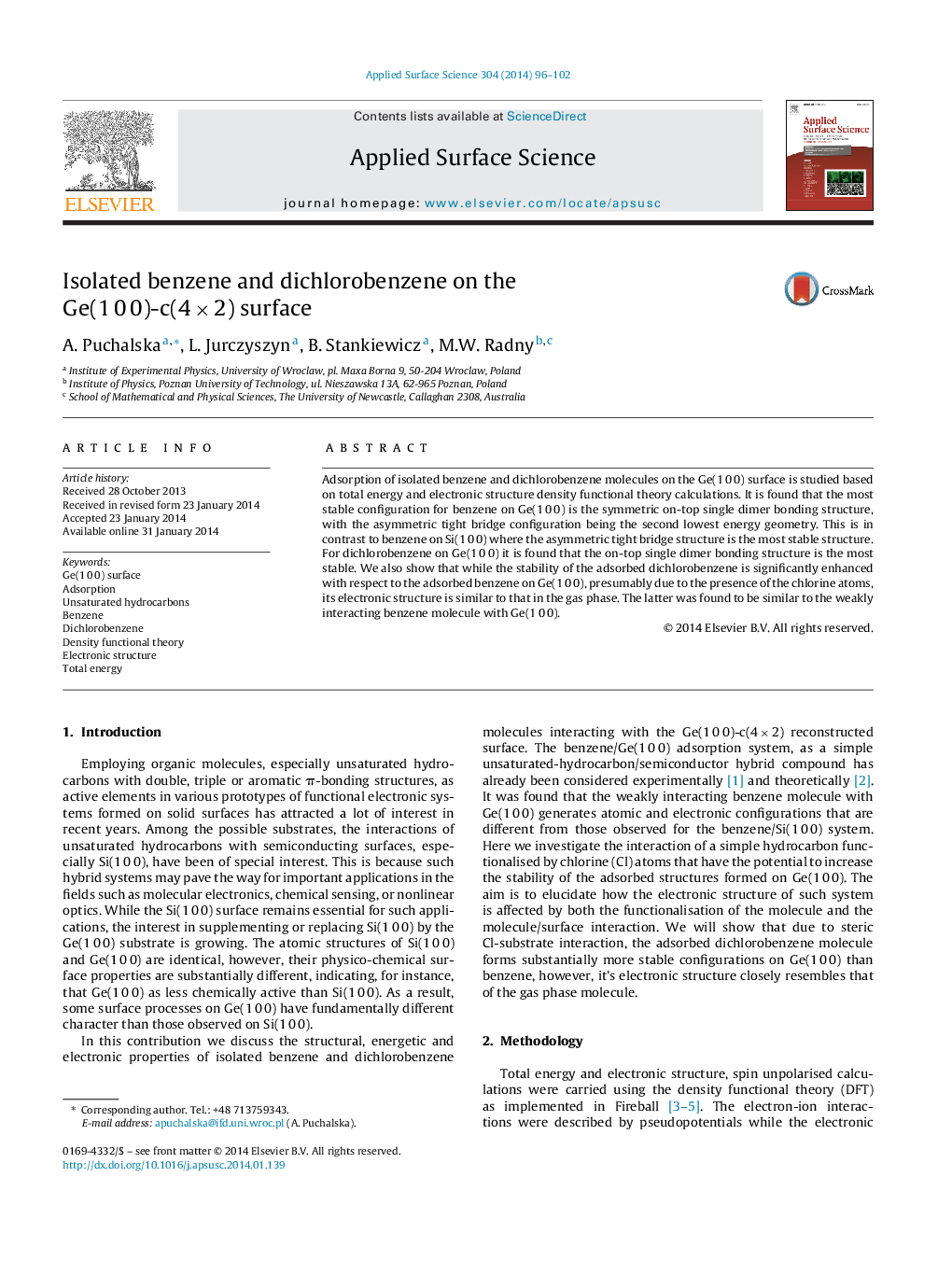| Article ID | Journal | Published Year | Pages | File Type |
|---|---|---|---|---|
| 5350566 | Applied Surface Science | 2014 | 7 Pages |
Abstract
Adsorption of isolated benzene and dichlorobenzene molecules on the Ge(1Â 0Â 0) surface is studied based on total energy and electronic structure density functional theory calculations. It is found that the most stable configuration for benzene on Ge(1Â 0Â 0) is the symmetric on-top single dimer bonding structure, with the asymmetric tight bridge configuration being the second lowest energy geometry. This is in contrast to benzene on Si(1Â 0Â 0) where the asymmetric tight bridge structure is the most stable structure. For dichlorobenzene on Ge(1Â 0Â 0) it is found that the on-top single dimer bonding structure is the most stable. We also show that while the stability of the adsorbed dichlorobenzene is significantly enhanced with respect to the adsorbed benzene on Ge(1Â 0Â 0), presumably due to the presence of the chlorine atoms, its electronic structure is similar to that in the gas phase. The latter was found to be similar to the weakly interacting benzene molecule with Ge(1Â 0Â 0).
Keywords
Related Topics
Physical Sciences and Engineering
Chemistry
Physical and Theoretical Chemistry
Authors
A. Puchalska, L. Jurczyszyn, B. Stankiewicz, M.W. Radny,
